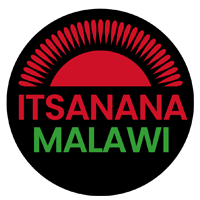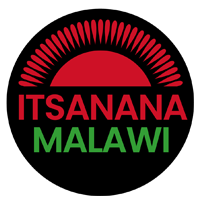Situated about 11km from the town centre off the road between Dedza Pottery and the junction for the Chongoni Forest College, this small village bordering Chongoni Forest Reserve recently established a community-tourism programme offering an opportunity to engage with traditional Chewa culture.
This impressive mountain, its upper slopes protected within the Dedza Mountain Forest Reserve, rises to 2,198m on the northern outskirts of Dedza Town. The mountain is largely covered in plantation forest, but there are still remnant patches of evergreen and riverine forest on the upper slopes, supporting typical forest animals such as samango monkey, bush pig, baboon and even leopard.
This 197km forest reserve, gazetted in 1926, lies due east of Lilongwe where it spans a stretch of the Rift Valley Escarpment rising from a basal altitude of 575m to the 1,564m peak of Thuma Mountain.
This 3,000ha community-owned reserve protects an area of grassy Brachystegia woodland that has been restocked with game after having been decommissioned as a government cattle ranch in the 1990s. The main stakeholders in the reserve are the 11 villages that border the former ranch, housing a total of around 30,000 people.
Gazetted as a forest reserve in 1922, Dzalanyama – Chichewa for ‘Place of Animals’ – extends over 990km on the Mozambican border, about 60km southwest of Lilongwe. The reserve’s dominant feature is the Dzalanyama Hills, whose steep slopes form a 70km watershed between Malawi and Mozambique, and it protects extensive areas of indigenous Brachystegia woodland studded with large granite boulders.
The influential Yao chief Liwonde has lent his name not only to Malawi’s tenth largest town, situated at the juncture of the M3 and the Shire river south of Lake Malombe, but also to the country’s finest safari destination Liwonde national Park.
The rock art of Chongoni falls into two district schools. The more ancient of these comprises schematic paintings executed in red oxide pigments and usually associated with large boulders and shelters suitable for habitation. These red schematic paintings are attributed to the Akafula hunter-gatherers who lived here for atleast two millennia prior to the arrival of the Bantu-speaking precursors of the Chewa about 500 years ago.
Lake Chilwa is the second largest and most southerly of Malawi’s major lakes, measuring approximately 650 square kilometres. Chilwa is surrounded by flat plains and isolated hills. About a century ago Lake Chilwa covered 1,750 square kilometres, its shores extending close to the bases of Mulanje and Zomba mountains. Chilwa is very shallow with no known outlet as a result a drought in 1968 caused it to dry up altogether, whilst the same was again seen in 1995-96.
Viphya Forest is a forest south of Mzuzu, a city in the Northern Region of Malawi. It is situated on the Viphya Plateau, amongst the Viphya Mountains. It has an area of 560 km² and is the largest man made forest in Africa.
The descent through the Rukuru River, and down the rift Valley escarpment delivers you to the lakeshore villages. The sketch is unbelievable, deep turquoise water, golden sands and a kilometre drop from the escarpment.
Chembe is a fishing village nick named Cape Maclear by Dr David Livingstone in dedication to his friend Sir Thomas Maclear in 1861. Cape Maclear or Chembe is located in a 6km2 enclave of unprotected land, within the Lake Malawi National Park.
The lush and seasonally marshy Mpatsanjoka River runs in an arc north of Senga Hill, before emptying into Lake Malawi about 25km north of Senga Bay. The river is home to a small resident population of hippos, crocodile and water monitors, and is also noted to its prolific birdlife.
Zomba Plateau is approximately 2 hours away from Blantyre, the sheer size of the plateau can be seen from certain areas in Blantyre. The Plateau measures 130km2 and reaches an altitude of 2,087m and plateau drops reaching up to 1200m. Zomba Plateau has a variety of rivers and streams running through it, surrounded by indigenous green forests filled with a variety of birds, animal species as well as insects.
The Mwalanthunzi stone, translated as the stone shade, is a meteorite located between Thyolo and Limbe. Its is steeped in local beliefs, one of which is it will guide you on a safe journey when heading North and not South.
Malawi’s most popular National Park located off the Southern and Central police border. Whether you’re traveling from the South to the Central or Northern Region, Liwonde National Park is literally on the other side, making this particular village a very busy trade area.
Mulanje is a spectacular 650km2 granite inselberg that rises in dramatic isolation above the Phalombe Plains southeast of Blantyre.
Chikwawa is located in the Southern Region; about 2 hours drive from Blantyre. Lake Malawi flows in to the Shire River which is the biggest river in Malawi. Chikwawa is one of the poorest areas in Malawi, however offers some unforgettable sites.
Lake Malawi is the second deepest lake in Africa? It has more fish species than any other lake on Earth. Lake Malawi is known as the Calendar lake because it is 365 miles long.

